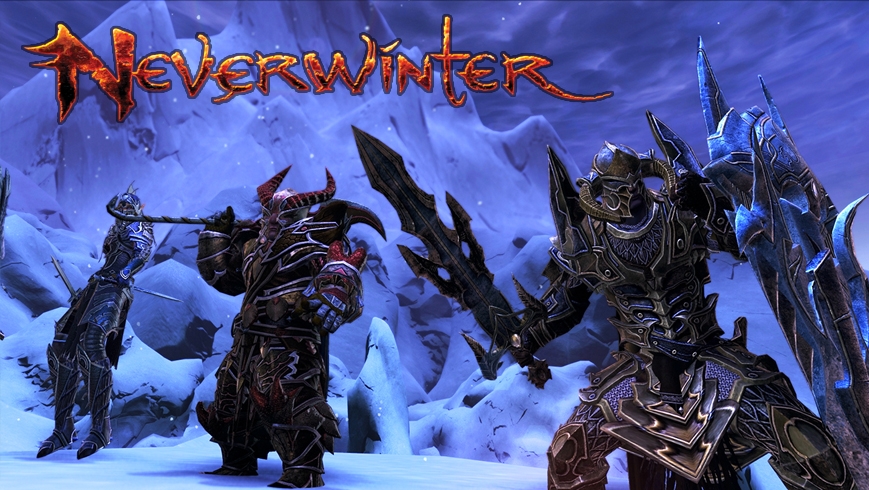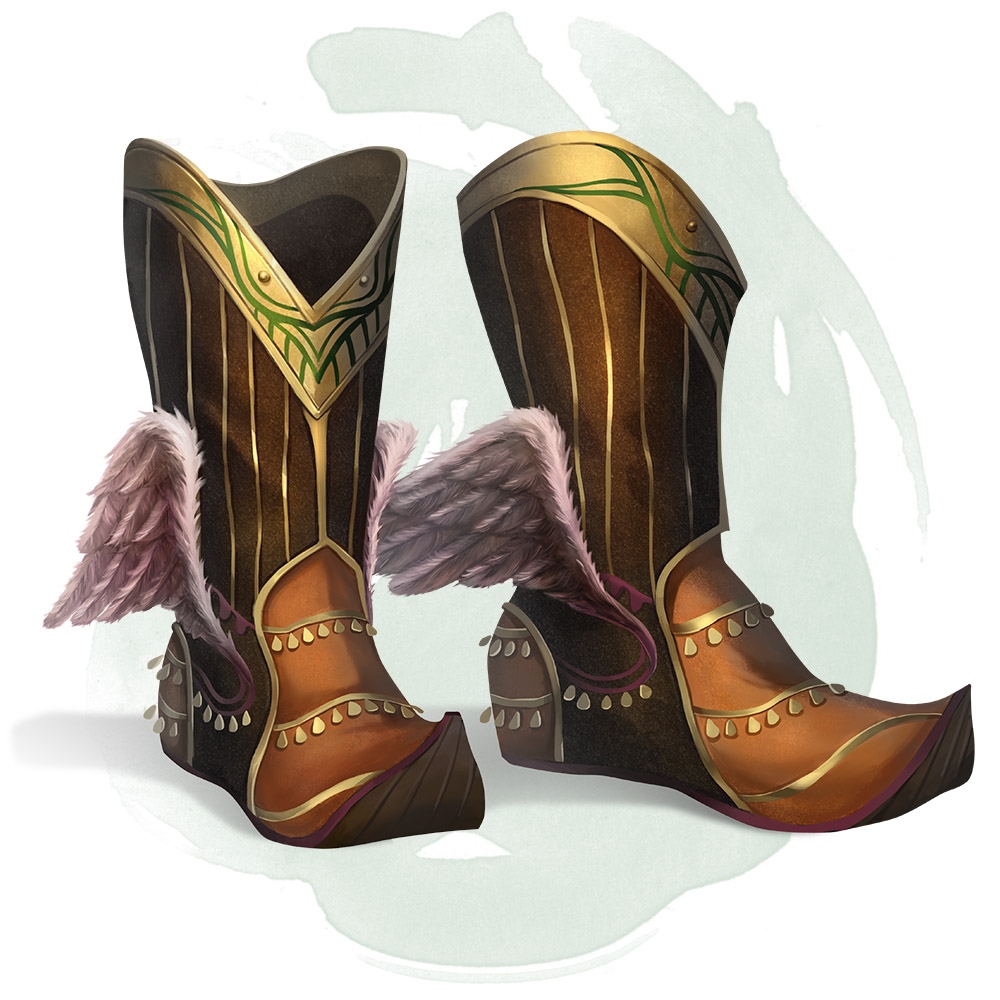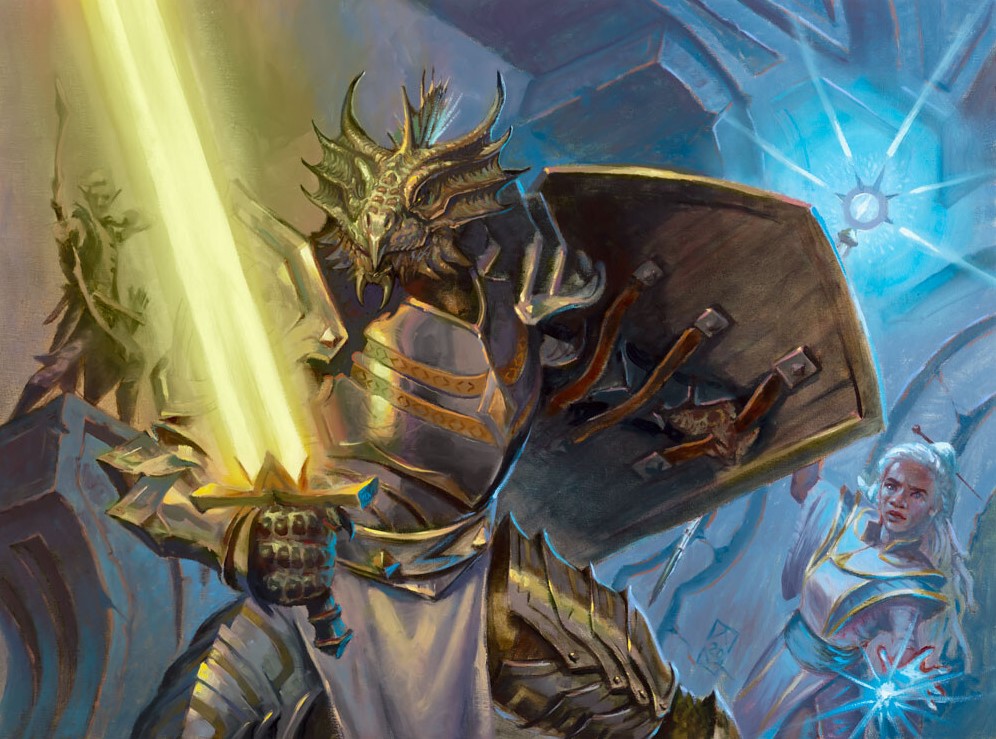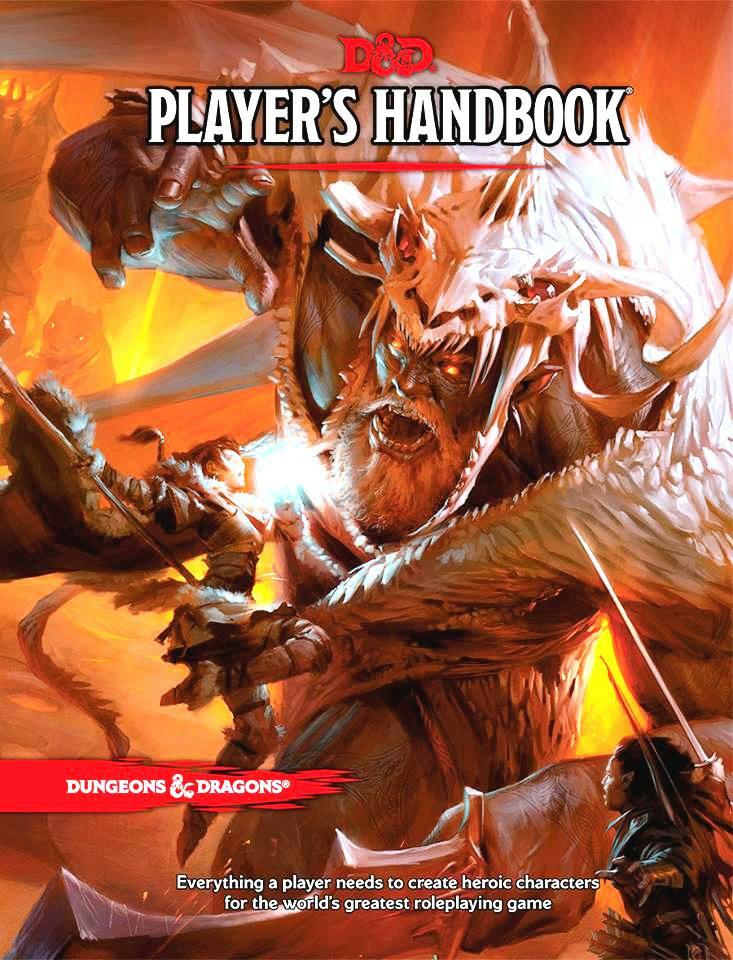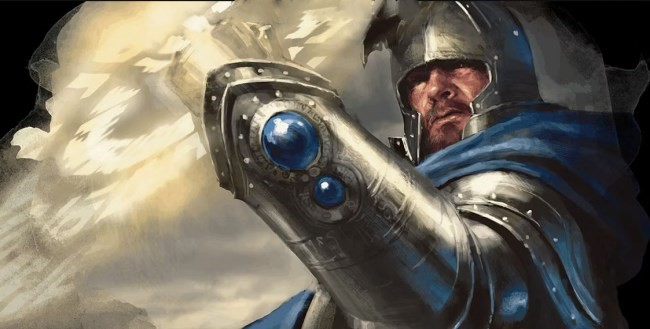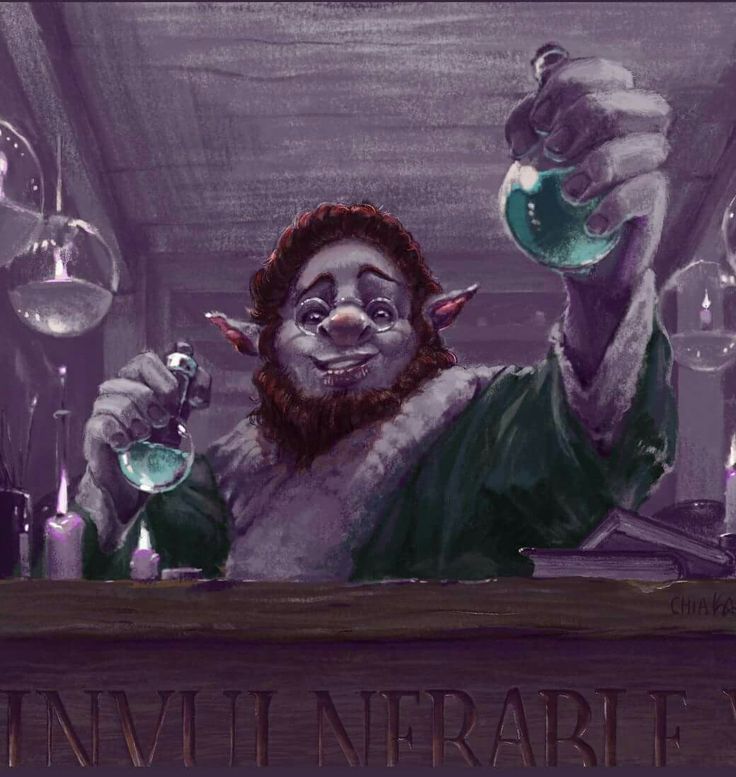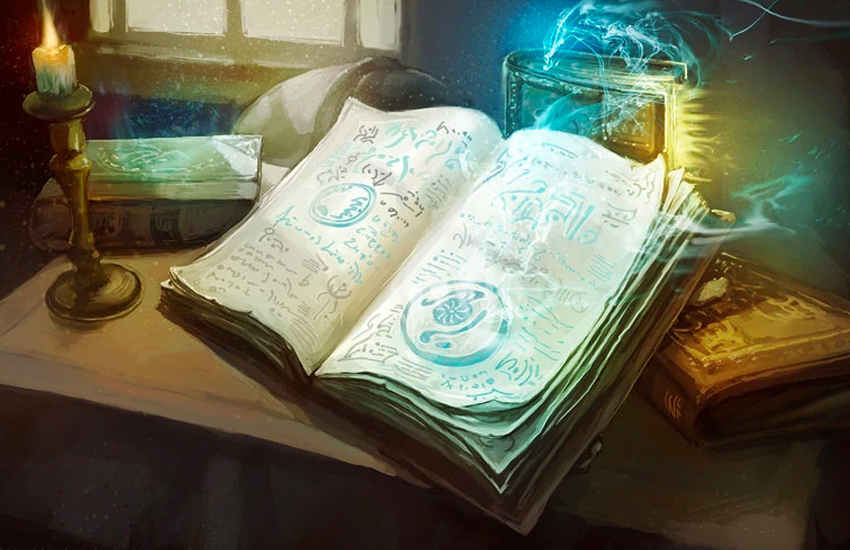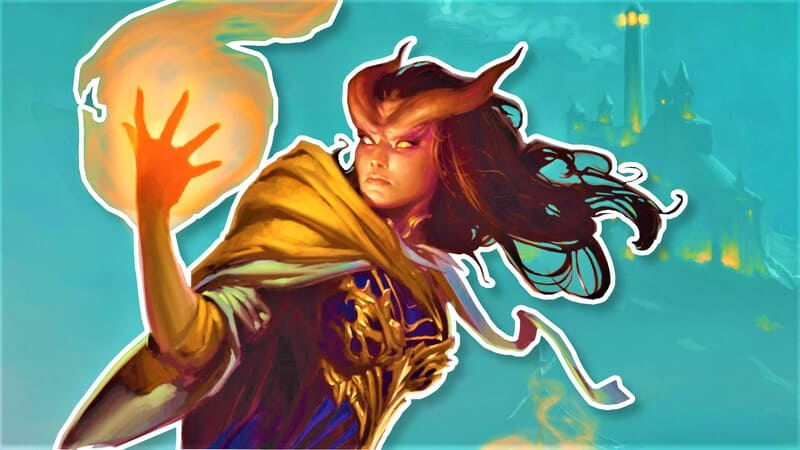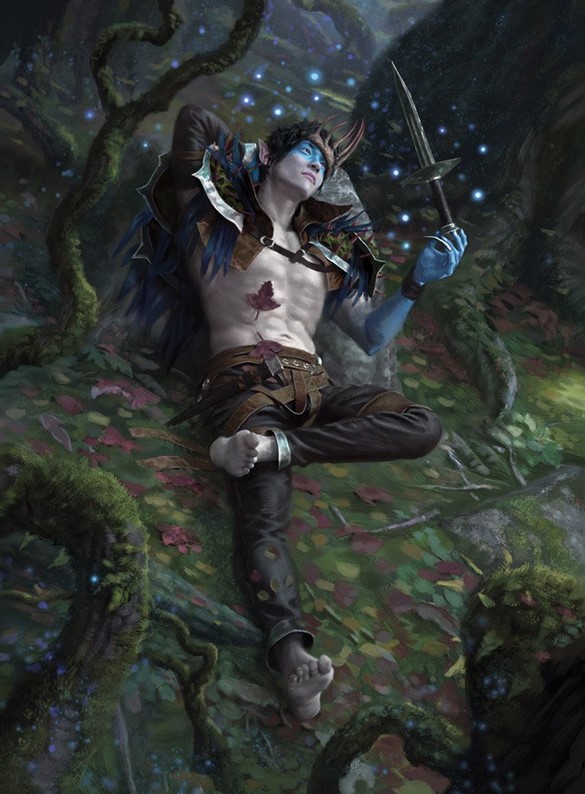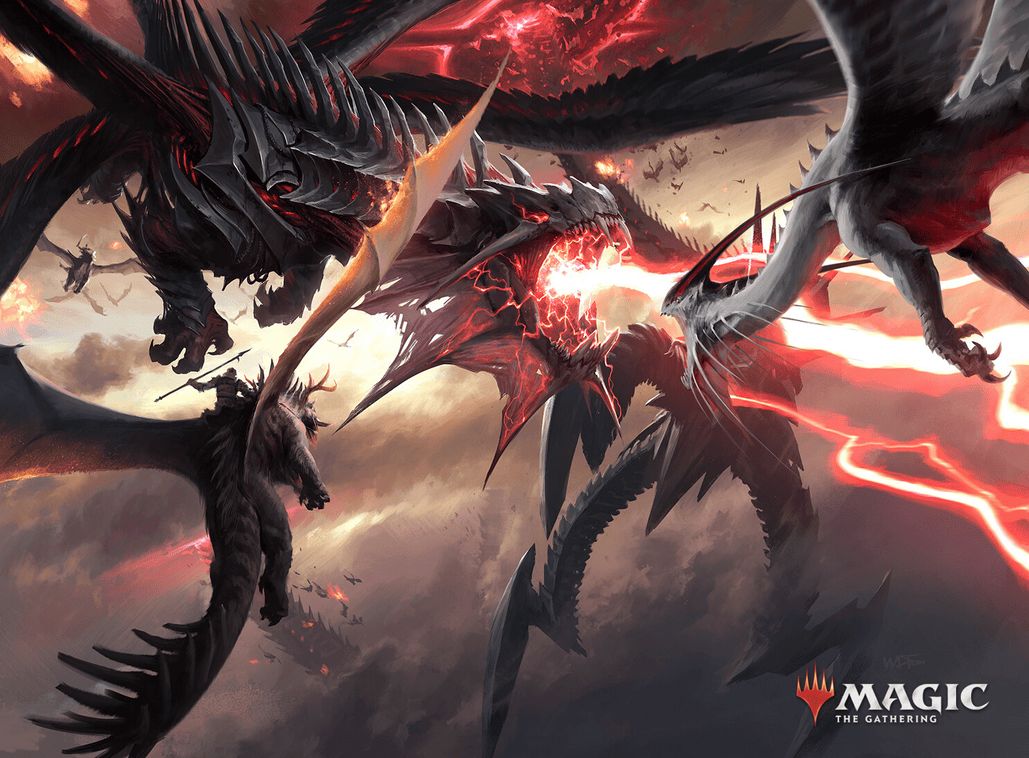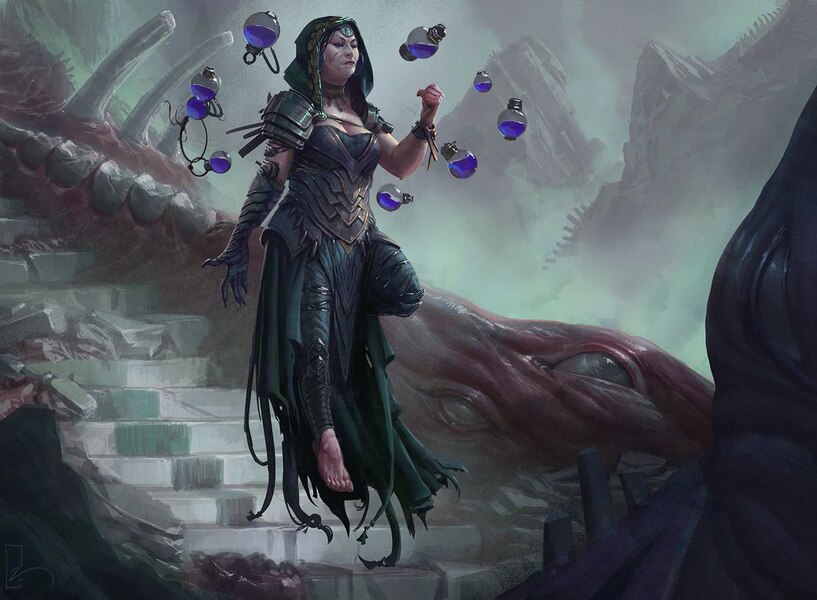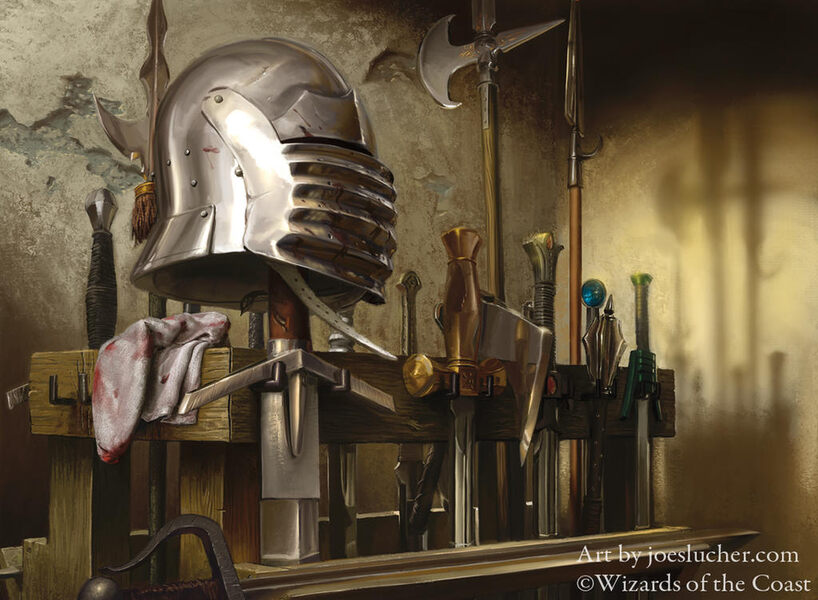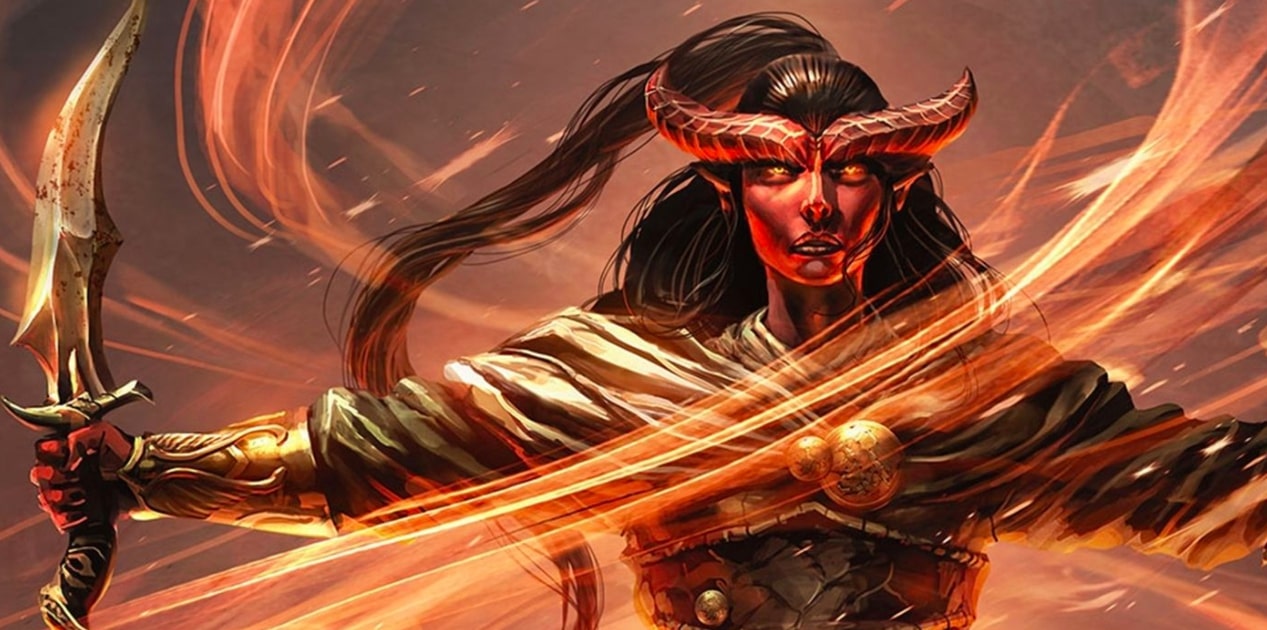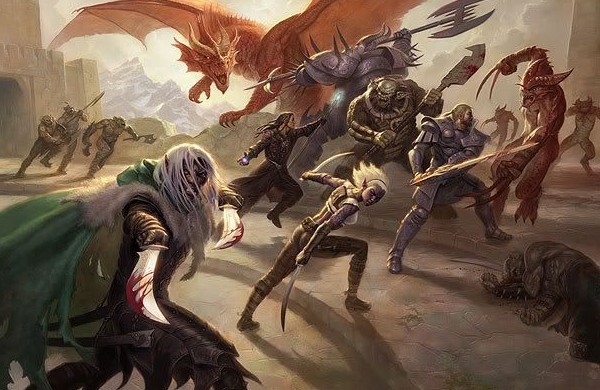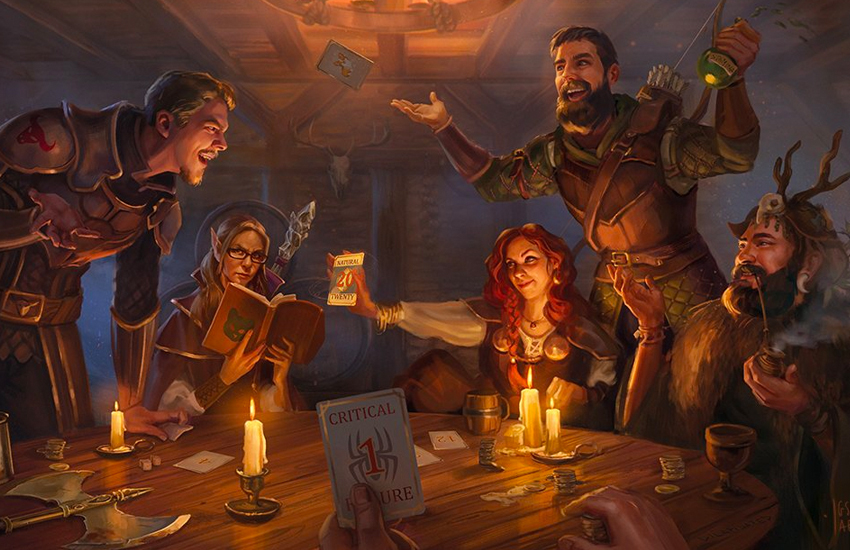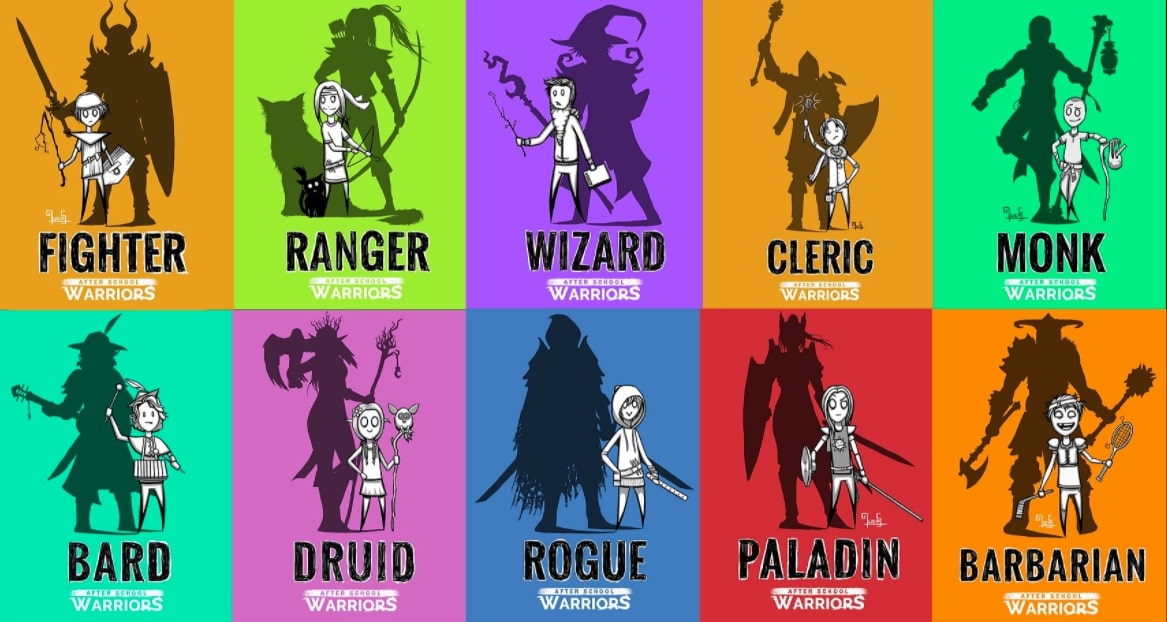![[Top 25] Best D&D Spells Every Party Should Have [Top 25] Best D&D Spells Every Party Should Have](/sites/default/files/styles/responsive_image_600xauto/public/2022-10/top_25_best_d_d_spells_every_party_should_have_cover.jpg.webp?itok=MCvQUpf4)
According to Gary Gygax, one of the creators of tabletop juggernaut Dungeons and Dragons, when you play D&D, you can “enjoy a world where the fantastic is fact, and magic really works.” But you might find the “magic really works” thing challenging for your current playgroup if you have a lackluster set of spells in your arsenal. If you find your party’s spell-casting composition more frustrating than fulfilling, it’s time to get honest with yourself. When was the last time you did a spring cleaning of your magic character’s spell slots? Has your party’s magic user been lugging around spell-casting dead weight without realizing it?
So whether you’re assembling your party for the first time as new players or already seasoned adventuring pros, it’s worth evaluating all the spells you and your party selected. While this list may have more utility spells than big damage dealers, the goal is to balance your party with both. If these are spread across your entire party, each magic class will bring some powerful damage and function spells to the table so you can dominate your next encounter.
(And if you’re worried that all of this info will be a moot point by the time the next edition of D&D rolls out in 2024, never fear – Wizards has already confirmed backward compatibility with 5E of the new system.)
So here’s a ranking guide of the top 25 D&D spells that are party “must-haves.”
25. Polymorph (Bard, Druid, Sorcerer, Wizard)

This level four transmutation spell from the Player’s Handbook allows for specific magic wielders to transform any creature (friend or foe) into a new form for up to 1 hour, dependent upon caster concentration. Polymorph can use this to turn enemies into more easily murderable creatures or bolster your party with large beasts.
Some caveats to polymorphism depend on the challenge rating and the classification of the enemy or ally. Sorry to crush your dreams, but you cannot polymorph yourself into a dragon, as your ending transformation must be classified as a beast.
Why Polymorph is Great
Outside of the obvious “transform bad guy into an easily squashed thing,” there are some practical applications of polymorph, such as:
- T-Rex Meta: One big selling point is the “T-Rex Meta” of polymorphism, i.e., transform your party member into a t-rex and let them obliterate your foes. While the above image does look fun and a bit OP, it’s not available until at least level 8, considering that’s when you have access to your level four spell slots and the challenge rating of the t-rex.
- Easy Spying: While there’s plenty of discussion of Polymorph in combat encounters, turning one of your party members into a Tiny beast can allow for quick infiltration of enemy spaces. Sure, the enemy could cast deception checks or magical insight on you, but it’d be unlikely if you’ve caught them unawares.
- Keeping Creatures Alive: Obviously, if you transform your enemy into a small creature, you can put it in a cage and take it to go, making for easy interrogation later. Likewise, you can transform your allies into smaller creatures if injured, giving them a slight hitpoint buff (as they get the creature’s full hitpoints) until you can stabilize them.
Polymorph full details: D&D 5th Edition Wiki
24. Find Familiar (Wizard)

This level one conjuration ritual from the Player's Handbook only works for the wizards in your party. After 1 hour of ritual prep, a wizard can conjure a familiar in a specific beast form. This celestial, fey, or fiend beast exists completely under your command but can act independently of you.
Having a familiar in your party is a drop-dead useful spell, as it can be summoned once and temporarily dismissed as an action, making it as easy to pull out as any other physical weapon in your arsenal. It also has no limit on how far it can be away from you and causes no damage to you if it is reduced to 0 hit points.
Why Find Familiar is Great
Find Familiar is such a great utility spell because it is so versatile. Here’s a short list of all the perks of Find Familiar, although the opportunity is close to endless with how flexible it is:
- Spell Drone Strikes: Touch range spells now have a 100-foot additional radius when the familiar acts as your spelling vector, allowing you to properly camp at the back of the party while the familiar casts on your behalf.
- Fact-Finding Missions: As mentioned previously, there is no range limit to a familiar. While it can only telepathically communicate and see using its eyes and ears within 100 feet, it can still do those things independently of you. Send it off on a scouting quest, and make it come back to give you a report later.
- Hauling Your Stuff: Most beasts from the familiar list are in the Tiny size range, allowing them to carry around 40 pounds of stuff, depending on strength modifier. This can be your gear, a small person, or even a bomb to drop on your enemies.
Find Familiar full details: D&D 5th Edition Wiki
23. Faerie Fire (Artificer, Bard, Druid)
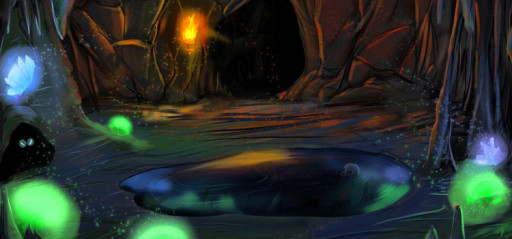
This level one evocation spell from the Player's Handbook is an excellent tool in the hands of most of the magic users in a given party. In a 60-foot range, your spellcaster can outline objects, creatures and party members within a 20-foot cube with a border of blue, green or violet light. The light lasts up to one minute and is dependent on user concentration.
The utility of this spell should be fairly apparent even to the dim-witted. Unless you have darkvision, most of your party needs to see. This gives them that “Light cantrip” sight while giving you some unique battle benefits.
Why Faerie Fire is Great
It's easy to see why Faerie Fire is such a useful utility spell. The possibilities are endless with its flexibility outside the basics of “it gives you light.” So here are some of the perks:
- Reveals Invisible Enemies: Enemies caught in Faerie Fire need to roll a Dex saving throw not to be outlined by light. Say your invisible enemy fails, and now your party has eyes on him. Sure, it might not affect you if you get advantage on the invisible enemy, but at least you know they’re there.
- Find Hidden Loot: Similarly, if your DM is a sneaky type who likes to make loot invisible or hard to see, if you cast Faerie Fire, your DM has no choice but to reveal the given booty in the area. Cha-ching!
- Useful Battlefield Control Tactic: Send your lowlight or darklight druid into a dark room, cast Faerie Fire, and – boom, now all your party with standard sight can get the same advantage on your enemies.
Faerie Fire full details: D&D 5th Edition Wiki
22. Catnap (Artificer, Bard, Sorcerer, Wizard)
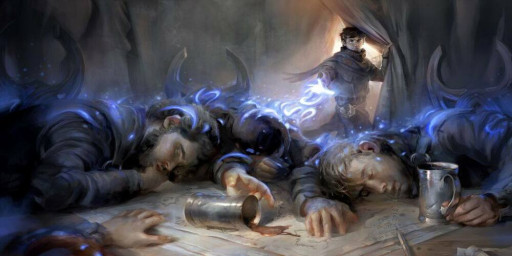
This level three enchantment is from Xanathar's Guide to Everything, one of our first non-Player’s Handbook spells to discuss in this article. Using this enchantment, willing creatures within 30 feet that you can see fall unconscious for the spell’s duration of 10 minutes and awaken with the effects of if they took a short rest.
No one should sleep on the benefits of Catnap. While players cannot use it offensively unless the enemies are willing – and I’m sure your DM could come up with an interesting fringe case for that – this is mostly a spell for helping your party out in a pinch. (Also, if you are a cat, you wake up feeling refreshed (just kidding))
Why Catnap is Great
Catnap is one of those newer spells that help you heal up your party without using a cleric or paladin. Here are the nuts and bolts of why it’s such a great spell:
- Restores Spell Slots: If you have a warlock in the party, that party member can choose to cast this spell on themselves or have your other member do so. Warlocks have a great class feat that allows them to restore all spell slots after a short rest. Short rests take an hour, and catnap, in contrast, takes 10 minutes. If your party was in an active combat scenario, it’s much more likely they’ll be able to restore spell slots.
- Restores HP: Logically, if Catnap restores spell slots as if you used a short rest, it does the same for HP. While you can’t cast it twice on a party member without them taking a long rest, this spell will help you stabilize your party members that might not be doing so hot on the health front.
- Impose Sleep on Resistant Races: An interesting application of this enchantment is using it on sleep spell-resistant races like elves. Elves cannot succumb to sleep spells, making them unconscious without physically knocking them out is an option. This spell could make for some interesting storytelling; as elves don’t sleep, it could be the first time they’ve experienced sleep in their entire lives.
Catnap full details: D&D 5th Edition Wiki
21. Zone of Truth (Bard, Cleric, Paladin)
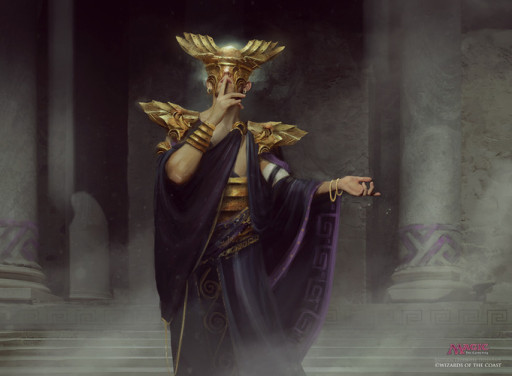
Truth or....truth?
This level two enchantment is from the Player's Handbook and is designed for your party's more religiously affiliated magic users. This spell allows the caster to make a 15-foot sphere centered on a location within a 60-foot range. Any creature that starts its turn or enters the sphere must make a Charisma saving throw.
What if the creature fails the save? This is where the game of truth or dare begins, only there is no dare. Every statement made in the Zone of Truth must be true (duh), of course, the creature can choose to be evasive and refuse to answer questions.
Why Zone of Truth is Great
Zone of Truth is one of those classic spells that are great for getting your party's desired results while enhancing storytelling and capturing party interest. Here’s why Zone of Truth is an awesome addition to your party:
- Encourages Non-Violent Interrogation: Instead of just murder-hobo-ing your way into getting the answers you want, your party can trap your enemies into close quarters and extract all the juicy details you need – no cat o’ nine tails needed.
- Combines Well with Other Spells: Say you want closer to a more definitive answer, chain your Zone of Truth with Command. Ask whatever question you want and instead of getting an evasive answer that tries to dodge the question, Command them to answer. As they’re compelled to tell the truth, they’ll have to be honest.
- Prove Your Loyalty to Someone: In an ultimate mind game, you can suggest to whomever you’re trying to impress that you’ll be willing to cast Zone of Truth. Whether you do it or not, that's bonus goodwill towards you. Additionally, as you’re casting it on yourself, if you succeed with your Charisma save, you could pretend you’re affected and lie to them anyway.
Zone of Truth full details: D&D 5th Edition Wiki
20. Motivational Speech (Bard, Cleric)
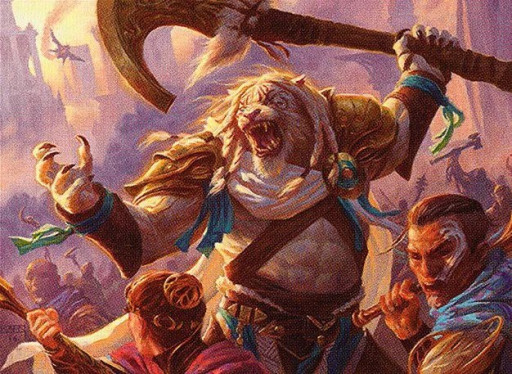
This level three enchantment is from the Acquisitions Incorporated module, a Dungeons and Dragons collab with internet legends Penny Arcade. This spell allows you to choose up to five creatures, friends or foes, within 60 ft hearing range and give them 5 temp HP and advantage on the next attack it makes (if it was hit first) and advantage on all wisdom saving throws. Once the temp HP goes or 1 hour elapses, the spell ends.
It is a shame that this spell is only accessible for the Bard and Cleric classes, as many magic users could benefit from the ability to give a rousing speech worthy of Henry the Fifth.
Why Motivational Speech is Great
Zone of Truth is one of those classic spells that is great for getting the results your party wants while enhancing storytelling and capturing party interest. Here’s why Zone of Truth is an awesome addition to your party:
- Not a Concentration-Based Spell: This spell takes one minute to cast and gives a ton of party perks. Many other spells require extended and sustained concentration for similar benefits. In fact, many r/dndnext Redditors have started asking “is this spell OP?”
- Like Inspiring Leader, But Better: Sure, players of all classes could take Inspiring Leader with a prerequisite of 13 Charisma or higher; it’s mostly centered on giving you temp HP. It has none of the great perks regarding the advantage on rolls. A bard that takes Inspiring Leader and Motivational Speech would be one scary combo.
- Works on Living and Undead Creatures Alike: Say your cleric has a bit of a necromancy interest; they can raise the dead and give them a rousing Motivational Speech. With that at their disposal, their newly found skeleton army will be ready to take on any challenge.
Motivational Speech full details: D&D 5th Edition Wiki
19. Minor Illusion (Bard, Sorcerer, Warlock, Wizard)
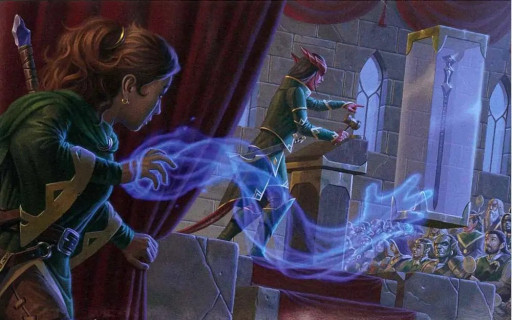
This illusion cantrip is from the Player’s Handbook and is a fairly standard offering for most of the magic users in your party. This cantrip allows the user to create an illusion of a sound or image within 30 feet for up to one minute. These images and sounds can be fairly sophisticated and intricate in nature.
Enemies and creatures can see through the illusion with a successful Intelligence check that goes against the caster’s spell save. If the illusion is a physical object, anything can move through it, which would reveal its illusory nature to everyone who was previously unaware. Physical objects can only be as large as a five-foot square cube.
Why Minor Illusion is Great
As one of those classic spells, Minor Illusion is a spell that can help your party achieve the results you’re aiming for. There are many reasons why Minor Illusion is an awesome addition to your party, including:
- Can Be Used By Multiple Non-Magic Subclasses: While you have your primary magical classes that can use Minor Illusion, other non-magical classes can also get in on the action. Fighters in the Eldritch Knight subclass, Rogues in the Arcane Trickster subclass, and Monks in the Way of the Shadow subclass can all take Minor Illusion. Wizards aren’t the only ones who can have all the fun!
- Lure or Thwart Enemies: Minor Illusion can be used in physical applications such as making a fake clone of you walk in the opposite direction or make a false wall obscure your path from the bad guys. You could also make sounds of people talking, moving away from your area. Your party could even go as far as making fake traps that dissuade the enemy from following you.
- Communicate with Your Team: If you’re trying to remain quiet, you can make illusions of paper with words written on them. Or you can also make a copy of a map you’ve seen before and share that information with your party.
Minor Illusion full details: D&D 5th Edition Wiki
18. Guidance (Artificer, Cleric, Druid)

"Take my advice - if you're going to do this silly thing, don't do it in this silly way.
This divination cantrip is from the Player’s Handbook and serves to fortify any dice rolls you or your party may make. Within touch range, you touch a willing creature; for up to one minute, that creature can add a 1d4 to a chosen ability check. This cantrip can be utilized in and out of combat if concentration is held and has clear combat applications.
Ability checks are different mechanics from other thrown skill checks in the game, as most ability skill throws cannot be buffed at all, as they’re based on your base skills and those modifiers. Keen studies of abilities in D&D will know that Guidance is just Bless with a more limited set of rules – but even Bless cannot affect skill checks, just attack rolls and saving throws. Considering that, knowing you have an ace in your sleeve can help even the most clumsy wizards not fall off the length of silken rope.
Why Guidance is Great
The possibilities of using Guidance in your party are endless. In addition to being a great choice to add to any party’s skills, Guidance has the following applications:
- Use it After the Ability Check: Guidance, while needing to be cast on the turn of the magic user if in combat, can be utilized by the touched creature within that 1 minute. That can mean that it’s that creature’s choice of when to utilize it.
- Can Be Added in Response to Bad Roll: While most DMs have homebrewed rules about natural crit fail rolls of 1 overriding modifiers, you could try to convince them that the worst horrible outcome shouldn’t befall you. This is because, at a bare minimum, you can roll at least 1 on your 1D4.
- Cast it on NPCs, Not Party Members: Willing creatures don’t just have to be your player character party members, but non-player characters too. Say you need Wise Willy to succeed on that Deception check to smuggle you into the castle, go ahead and cast it on him. Better safe than sorry.
Guidance full details: D&D 5th Edition Wiki
17. Spare the Dying (Artificer, Cleric)
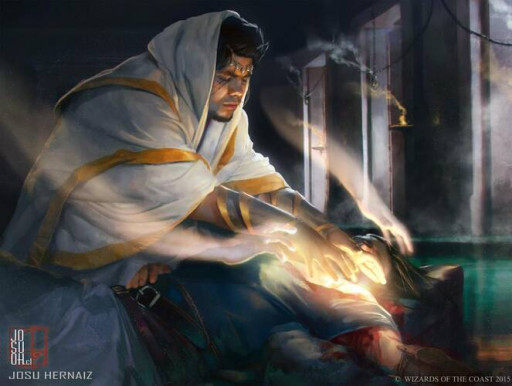
"Rest now, friend..."
This necromancy cantrip is from the Player’s Handbook and is an old standby for a good reason and has some of the most simple mechanics in the game. A magic user touches a living creature within range with 0 HP and now that creature is stabilized instantly.
Sure, this spell doesn’t affect constructs or the undead, but this is a dead helpful spell for keeping your party up. Grave Domain subclass Clerics can even get it as a bonus action.
Why Spare the Dying is Great
Spare the Dying can be used in a variety of ways in your party. The following are some of the other applications Spare the Dying has:
- Use it on Friends or Foes: Obviously, you’d use it on your party. But enemies can also receive stabilization from Spare the Dying. Say you need to KO an enemy, but you don’t want to kill him – you can Spare them so you can take them with you for interrogation later.
- Spare NPCs: Get the help you need and build trust between your party and chosen NPC. Sparing them or their loved ones in front of them can show that you mean no ill will towards them if they have been previously distrustful.
- When You’re All Out of Heals: Sometimes a combat encounter can be tough on a party. Neat! Spare the Dying is a great “yolo” (well maybe not quite literally yolo) play to get a PC stable when you’re all out of healing spell slots. Use it in tandem with a healing spell of your choice or even Catnap and now you have a party member, not on the brink of death.
Spare the Dying full details: D&D 5th Edition Wiki
16. Heat Metal (Artificer, Bard, Druid)
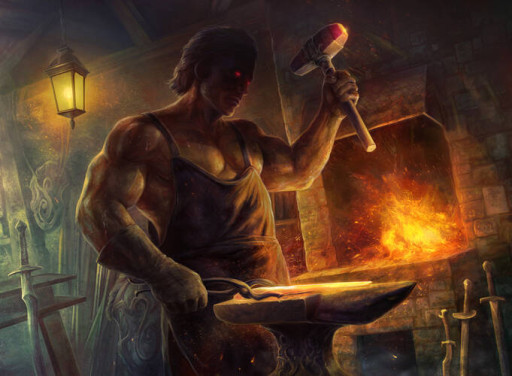
This level two transmutation is in the Player’s Handbook and is the perfect addition to any Dwarf Artificer’s repertoire. Your caster can choose a crafted metal object within a sight range of 60 feet. That metal object can be a weapon, amulet, suit of armor, or more.
Your spellcaster heats the object, making it glow red hot. Creatures take 2d8 fire damage upon success and hold the spell with concentration. They have the opportunity to save through a Constitution saving throw. If they don’t save, it’s flame on.
Why Heat Metal is Great
Heat Metal is a great spell that bridges the gap between utility and damage dealing. Sure, you can heat metal to start a fire, but it’s great for getting some awesome damage on the field. Among Heat Metals’ other great perks are:
- Keep the Damage Coming via Bonus Actions: For up to 1 minute, or if your concentration remains unbroken, you can continue to use a bonus action to cause the foe to take additional 2d8 fire damage until the spell is over.
- Clerics Can Get in on the Fun: If your party has the cleric that chooses the Forge Domain, that cleric can also pick up the opportunity to use Heat Metal. While it comes with being able to wear heavy armor, you get access to some heavy hitter spells like Heat Metal.
- Upcasting Packs a Punch: Every time your spellcaster chooses to use a higher level spell slot for this spell, the damage increases by 1d8 per hit. So casting it at the 7th level spell slot would allow for an additional 5d8, which would also count for your bonus actions. Talk about firepower!
Heat Metal full details: D&D 5th Edition Wiki
15. Mage Hand (Artificer, Bard, Sorcerer, Warlock, Wizard)
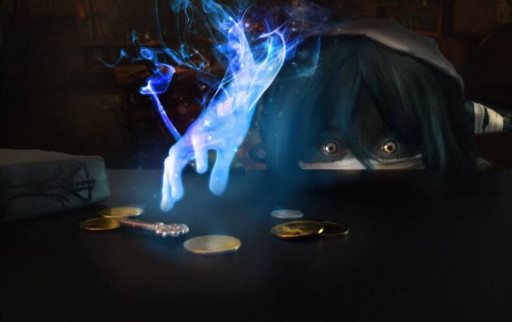
Your spellcaster can create a floating hand within a 30-foot range for 1 minute. Your spellcaster’s action that round is spent controlling the hand. This conjuration cantrip is in the Player’s Handbook and is another of D&D’s greatest hits for spells.
With a few exceptions, a player can use the hand for just about everything a player might get up to in a turn. The rules clearly state that the hand can’t “attack, activate magical objects, or carry more than 10 pounds.” Outside of those limits, a crafty spellcaster can do what they please.
Why Mage Hand is Great
In terms of utility, Mage Hand is a favorite go-to spell for a reason. There are many advantages to using Mage Hand, such as:
- Creative Damage Dealing: A clever player can think outside the box on the “no attacking” rule. The spell text mentions that you can pour the contents of a vial – what if those contents were acid and poured onto an enemy? Or what if the switch you’re pulling opens up a non-magic trap door that drops enemies onto a pile of spikes? There are endless opportunities.
- Check for Traps: A fringe use case, but an interesting one is that of trap checking. There’s no better way to make your DM tear their hair out in frustration than by choosing to use Mage Hand to push every single floor tile in a dungeon and check for pressure plates.
- Get Better Light: If your party is full of characters with the standard sight, a great way to illuminate your situation in a pinch is to set your mage hand to carry torches. Torch and the Mage Hand range rules apply, but it can be a useful way to get all the light you need in a situation fast. Plus, as the spell is not dependent on concentration, you can go to town by activating it without fear of user interruption.
Mage Hand full details: D&D 5th Edition Wiki
14. Healing Word (Bard, Cleric, Druid)

This first-level evocation is in the Player’s Handbook and is a staple of the healing spellcaster repertoire. As a bonus action, a caster can make an instantaneous healing spell to a person within the sight range of 60 feet. The HP regained is equal to 1d4+ spellcasting modifier.
At this point in your D&D career, what else can you say about a healing spell? It heals and does a great job of it. While it doesn’t work on undead or constructs (artificers and necromancers need not apply here), it does work on all creatures – friends or foes.
Why Healing Word is Great
Everyone needs healing at the party, no matter how many health pots you bring to an encounter. Here are some of the great perks of Healing Word:
- Bonus Action Heals: An incredible perk to Healing Word is that it can be cast as a bonus action, leaving your primary action of the turn order for attacking or other forms of healing. You could even cast Spare the Dying as your first spell and follow up with a (hopefully) generous addition of HP.
- Works on Surprising Races: Despite the Player’s Handbook implying the contrary, an official ruling from Eberron: Rising from the Last War says that Healing Word can work on Warforged. Does this make sense in comparison to “no constructs allowed”? Maybe not – but who are we to question?
- Synergizes with Twinned Spell: If you’re a Sorcerer who takes the Divine Subclass – good news, you are also eligible to take Healing Word. Twinned Spell allows Sorcerers of any class to spend sorcerer points to target a second creature in the casting area. The full Twinned Spell list is pretty substantial and worth looking at for additional interesting synergies.
Healing Word full details: D&D 5th Edition Wiki
13. Magic Weapon (Artificer, Paladin, Ranger, Sorcerer, Wizard)
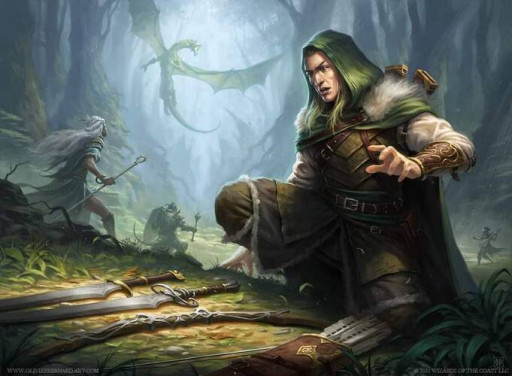
"Just hurry up and pick one!"
This second-level transmutation is in the Player’s Handbook and is great for those mostly non-magic folk in your life. A caster can touch a non-magical weapon, imbuing it with magic, yielding a +1 bonus to attack and damage rolls.
While this spell requires concentration on the caster's behalf, the effects can last up to 1 hour. This makes it very similar to Druid cantrip Shillelagh but a bit more robust. It is a second-level spell, after all, and what is better than a magic zweihänder for slicing onions during those campfire meals.
Why Magic Weapon is Great
Magic Weapons in D&D 5E are designed to be more uncommon than past editions, so the ability to transform one into Magic Weapon whenever you like has some serious draw. Magic Weapon has many benefits, including:
- Can Be Cast On Any Weapon in Touch Range: Unlike Shillelagh, you can cast Magic Weapon on any weapon you can touch and keep that enchantment in play for an hour. In theory, you could even cast it on an enemy’s weapon (although I have no idea why you would).
- Combats Resistance to Mundane Weapons: If you’re up against an enemy encounter with a resistance to the heat you’re packing, bringing a caster who knows Magic weapons can make a huge difference in that fight. Imbue your weapon with magic and get to murdering.
- Enchanting Weapons for Fun and Profit: While it’s probably not what the game designers of D&D 5E envisioned for this spell, it’s certainly an entertaining idea. If you needed to make a quick buck and weren’t on the Good side of the alignment chart, you could enchant a weapon, attempt to sell it and encourage the prospective buyer to cast Detect Magic on it, and walk away with some good profit. Like leprechaun’s gold, the sucker won’t know that they bought a lemon until, hopefully, you’re several towns away.
Magic Weapon full details: D&D 5th Edition Wiki
12. Charm Person (Bard, Druid, Sorcerer, Warlock, Wizard)
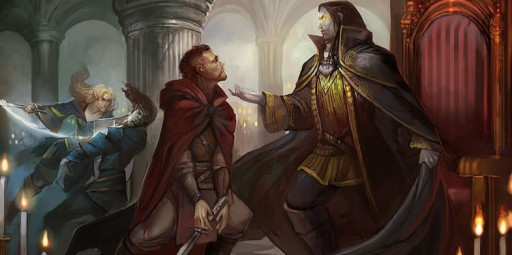
This first level enchantment is in the Player’s Handbook and the odds are that every bard in the country knows this one. Within a sight range of 30 feet, you can try to charm a humanoid creature. It needs to make a Wisdom saving throw, potentially with advantage depending on the combat situation. If it fails, it is successfully charmed by you for 1 hour.
The only way to disrupt this spell is if your party attacks or hurts this creature. The creature regards you as a friendly acquaintance while spelled (not to last) as it will recognize it was charmed by you whenever it is released from the spell.
Why Charm Person is Great
Everyone at some point has had dreams of controlling the minds of other people in the real world. Now your fictional stand-in can do too. Here are some of the perks of this spell:
- So Many Subclasses and Races Can Get It: If you need a charismatic leader of your party, that person could be of the Trickery Domain Cleric subclass, Fey Wanderer or Arcane Trickster Rogue subclasses, or the Eldritch Knight Fighter subclass. Additionally, the Fierna Tieflings can receive this as well.
- You Can Get This From a Feat: Whenever building your caster from the ground up, don’t sleep on feats that can get you free castings of Charm Person. The Magic Initiate feat allows party members to get a casting of Charm Person per day, and so does the feat Fey Touched.
- Subtle Enchanting: Not only would the target, upon a failure to save, not know they were enchanted, but those around them might also not realize it. This spell is so subtle that no one may notice your party member cast it, leading to sneaky uses.
Charm Person full details: D&D 5th Edition Wiki
11. Feign Death (Bard, Druid, Cleric, Wizard)
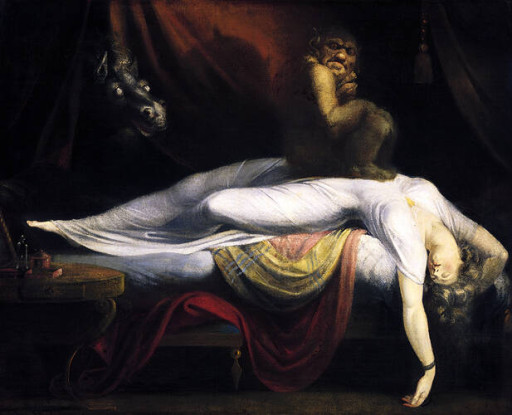
This level three necromancy ritual gives playing dead a whole new meaning. In this ritual, you touch a willing creature that puts it in a “cataleptic state that is indistinguishable from death.” If you had to look up catalepsy, so did I. It’s a medical condition “characterized by muscular rigidity and fixity of posture regardless of external stimulus.”
For this D&D spell, Feign Death allows a willing target to be passed off as dead for an hour. The feigning creature has resistance to all damage except psychic and receives the blinded and incapacitated states.
Why Feign Death is Great
Feign Death may have great utility uses, but the storytelling purpose is where this spell shines. Here are some of the best parts of Feign Death:
- Cast it On Yourself: Whether you want to fake out people at a feast by pretending that the meal is poisoned or hide in a pile of other corpses. Whether you’re trolling or just trying to flee, it’s an interesting (if not risky) way of escaping a situation.
- Use it Like a Trojan Horse: While there is a 30-foot initial casting area, Feign Death will persist no matter where the caster is in proximity to the recipient. That can mean you send your “dead body” to the morgue to infiltrate a castle and that party member or NPC gives you an in once they wake up.
- Add Time to the Clock: When a willing creature has Feign Death cast upon it, it will not be able to have any negative status conditions continue during its duration. Whether it’s disease or poison, those effects are null until Feign Death has been removed from the character.
Feign Death full details: D&D 5th Edition Wiki
10. Shape Water (Druid, Sorcerer, Wizard)

Your wizard now likes to surf.
This transmutation cantrip from Xanathar's Guide to Everything is one of four cantrips dealing with the elements to be added to the game. This cantrip allows you to manipulate an area of water that’s no larger than a 5-foot cube within 30 feet you can see instantly, with potential effects lasting as long as an hour.
The type of water manipulation can affect the flow in any direction, cause the water to form shapes, change the water’s color/opacity, or freeze it. You can combine two of these, offering some pretty exciting combinations. And no, those combinations do not include blood bending like in Avatar the Last Airbender.
Why Shape Water is Great
Shape Water has some excellent mechanics in and out of combat; here are some interesting uses of this cantrip:
- Change Water Color for Your Benefit: If you ever wanted to win a drinking contest, changing your water to a wine red or a translucent tan would allow you to sweep the board. You could also change dirty water to sparkling clear instantly if you were searching for loot that the DM put at the bottom of a lake.
- Ice as Offensive Protection: Combining some of the movement powers with the icy powers, the possibilities are endless for blocking, shaping, locking, climbing and controlling. You can also drop, roll, and pierce someone in combat with ice in its various forms. Additionally, as Shape Water cannot freeze water around a living creature, you can try and freeze chests to verify they’re not mimics in disguise.
- Improvised Ice Weapons: You could freeze holy water into spheres and lob them at infernal creatures. They’d likely get improvised weapon statistics, but it’s still better than unarmed. There’s even a case for using Shape Water to make ice arrows or even an ice bat.
Shape Water full details: D&D 5th Edition Wiki
9. Detect Magic (Artificer, Bard, Cleric, Druid, Paladin, Ranger, Sorcerer, Wizard)

My spider senses...I mean magic detecting senses are tingling.
For this level 1 divination ritual from the Player’s Handbook, the whole party can get in on the fun! If you find a magical object during your scan, you see it with a faint aura surrounding it while learning about the school of magic it belongs to. Upon casting this upon yourself, you can sense magical presences within 30 feet, with some caveats for if something is buried or obstructed.
Detect Magic has various uses, from checking people, places, loot, or enemies. If you’re in the least bit suspicious about magic in your midst, better cast it. This spell requires concentration (up to a limit of 10 minutes) to see the magic in the area.
Why Detect Magic is Great
Detect Magic is another D&D standby that earns its keep for a good reason. Some specific applications of detecting magic include:
- Sensing Magical Traps: It seems like a no-brainer, but any time you enter an oddly quiet room, it’s time to cast detect magic. If your detection sense activates, your party will find magical traps, so you know to disarm them or avoid them entirely.
- Detecting Disguised Individuals: Frequently, people will disguise themselves via magical means through Polymorph, Wild Shape or Alter Self. With a roll of detect magic, you’ll know if that form is their proper form or if they’re trying to pull one over on you or the party.
- Finding Magical Loot: One of the most straightforward applications of Detect Magic is using it to find a coveted magical trinket, artifact, weapon, or other objects. Even if the loot is buried within a foot of the surface, your Detect Magic ability can still locate it.
Detect Magic full details: D&D 5th Edition Wiki
8. Modify Memory (Bard, Wizard)

This level five enchantment is found in the Player’s Handbook and is one of Gilderoy Lockhart’s favorites. For up to 1 minute, you can reshape another creature’s memory within the sight range of 30 feet. They must make a Wisdom saving throw not to get the brunt of the memory modification (with a lot of interesting side effects if they do indeed save).
Suppose your spellcaster succeeds in the Modify Memory request. The target’s memory can be erased, recalled perfectly, changed to your specifications or a new memory inserted in its place. In that case, the caster can affect any part of that creature’s memory that happened in the past 24 hours, with the event not taking longer than 10 minutes in total duration.
Why Modify Memory is Great
As a fifth-level spell, this is a powerhouse for getting what you need with your enemies, but it can have surprisingly positive applications. Here’s why Modify Memory does the job:
- Can Be Scaled When Upleveled: While the level five version of this spell can only tackle a memory from the past day, casting it at higher spell slots allows for you to alter memories from “up to 7 days ago (6th level), 30 days ago (7th level), 1 year ago (8th level), or any time in the creature’s past (9th level).” The enemy's entire past may be at your caster’s disposal.
- Can Be Used for Healing: Not necessarily physical health, but mental health. A generous caster could put this spell on an individual to remove traumatic memories from their past or alter them to be more positive and less harmful.
- Can Be Used for Resolving Combat Encounters: Instead of reaching for your dagger when you encounter a group of bandits, why not go for Modify Memory instead? Your bard can implant false memories into the mind of a bandit, sowing seeds of discord amongst their group, hopefully allowing them a quick and easy escape.
Modify Memory full details: D&D 5th Edition Wiki
7. Magic Missile (Sorcerer, Wizard)
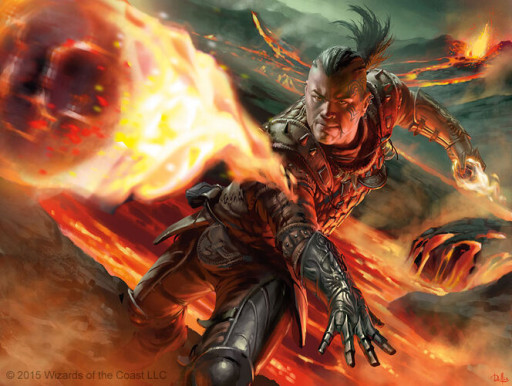
This level one evocation is found in the Player’s Handbook and perhaps part of one of the most quotable D&D memes of all time. The magic-user casts three glowing darts of magical force that simultaneously deal 1d4+1 damage to a target or targets within a range of 120 feet instantly.
This spell can be cast using upper-level spell slots, “yielding more darts for each level above the slot level.” So if you threw this at level 7, you could get 6 additional magic bolts in play. Each bolt can utilize one damage roll per lead rules designer Jeremy Crawford if you so choose.
Why Magic Missile is Great
This spell is a powerful one in the right sorcerous or wizardly hands. Here’s is why Magic Missile takes the cake:
- This Spell Cannot Miss: No attack rolls, just pure damage. It’s a 100% hit guarantee unless a target quickly throws up Shield, which negates it. And the fact that all three bolts could hit the same creature means it’s a hefty spell, especially for level 1.
- Magic Missile can Break Concentration: In a recent D&D game ruling, Magic Missile can break other spell caster’s concentration – with each instance of a missile bolt requiring a new concentration roll. A great way to disrupt the enemy wizard in the back for sure.
- Line of Sight Can Be Very, Very Far Away: Any enemy's sight within 120 feet can allow your magic user to cast Magic Missile. That can be through a peephole, a door or floor crack, or even a lock.
Magic Missile full details: D&D 5th Edition Wiki
6. Ashardalon’s Stride (Artificer, Ranger, Sorcerer, Wizard)

This level three transmutation is from Fizban’s Treasury of Dragons and is a spell that can help you hone your “explosive speed.” This spell can only be used on the self as a bonus action after concentrating for up to 1 minute.
After casting this spell, the magic user can increase their speed up to 20 feet with no provocation of opportunity attacks. When moving by a creature or object (not being carried or worn), the caster will deal 1d6 fire damage from your movement. Heads up: friendly fire is on when it comes to this spell.
Why Ashardalon’s Stride is Great
When you’re peeling out of a combat encounter, you’ll leave your enemies not just in the dust but also caught on fire. Here are some more great perks of Ashardalon’s Stride:
Does Not Trigger Saving Throws: 1d6 fire damage happens to the enemy or creature regardless of Dexterity. Not triggering a saving throw can make or break an encounter.
Enhance Speeds Attributed to Race: Some races like Shifters, Tabaxi, Orcs, Halflings, and Aarkocra are already pretty speedy. Enhancing their speed with an additional 20 feet can mean some of these races can move up to 70 feet in one turn – and cause a lot of damage to boot.
Haste Your Stride: Even though Ashardalon can only be cast upon the self, another magic user in your party could cast Haste upon a user that already had Ashardalon active. That would double the base speed, give a lot of great bonuses and additional advantage and give you an additional action. Could you imagine those two spells on top of a naturally fast race?
Ashardalon’s Stride full details: D&D 5th Edition Wiki
5. Chromatic Orb (Sorcerer, Wizard)
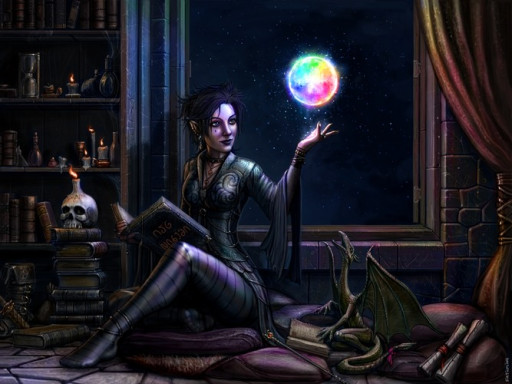
No wizard is complete without an orb to ponder.
This level one transmutation is a classic spell with some of the best versatility an aspiring spellslinger can ask for.
Initially introduced in the 1st Edition of D&D and appearing in the Player's Handbook, the caster creates a four-inch diameter ball that deals 3d8 damage of any of six damage types; (acid, cold, fire, lightning, poison, or thunder), chosen by the caster.
Why Chromatic Orb is Great
When you’re low-level, and your DM hits you with some early game curveballs, chromatic orb swings in for the win. Why?
- Baby’s First Spell: As a fledgling student of the arcane arts, starting spells can be a hindrance depending on the initial setting of your campaign. Its relatively low cost (it only requires one uncommon item to cast) makes it an ace in the hole for any early game bosses or annoying bartenders you would like to smite.
- That’s a Lot of Damage: Magic missile, another early spell, applies 1d4+1 worth of damage on a successful roll (DPS but not all at once damage). Comparatively, Chromatic Orb causes 3d8 worth of damage. If it is cast using a spell slot of 2nd level or higher, the damage increases by 1d8 for each slot level above 1st.
- Avatar, the Last Orb Bender: The selection of elemental damage to choose from is massive, allowing a wiz-kid to take advantage of any elemental weaknesses a monster foolish enough to stand in your way has. The only catch is you need to supplement with monster knowledge or have some spells to identify any weaknesses.
Chromatic Orb full details: D&D 5th Edition Wiki
4. Abi-Dalzim's Horrid Wilting (Sorcerer, Wizard)
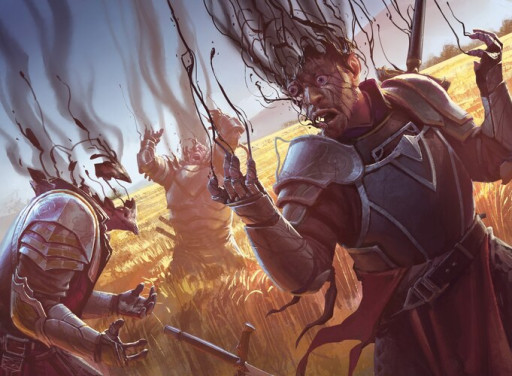
This eighth-level spell doesn’t help enemies stay moisturized, focused, and in their lane. You create a zone incapable of supporting life and draw moisture from every creature in a 30-foot cube centered on a point you choose within a range of 150 feet. Because this scales so well with high-level characters, inflicting 1d8 damage per caster level isn’t anything to scoff at, considering the maximum damage you can perform is 16d8.
Why Abi-Dalzim’s Horrid Wilting is Great
Long range, AOE damage, and high DPS are why it earns its place as a “must-have” spell for any caster. Here are some of the specifics:
- Death by a Thousand Cuts (Sucks): Bulk damage has its place with other spells, but DPS is king (or queen) for distributed damage. Not only that, fiends, celestials, and elementals (late game or higher difficulty enemy races) have some sort of resilience to an effect - but rarely do they have resistance to necrotic damage, which this particular spell deals in ample helpings (eat your heart out golden corral)
- All Dried Up: Although the target can attempt a saving throw, it only cuts the damage in half, and if any enemies in the affected area happen to be water elementals or plant-based, they take -2 to all saving throws. Regardless of the throw, they still take damage. So much for those veggie burgers.
- Round-Up: An added bonus – depending on the cast location – this spell can use its dehydrating abilities to your advantage to clear out organic obstacles like trees, vines, or any other non-magical vegetation because they die instantly, creating a path where perhaps there wasn’t one before!
Abi-Dalzim’s Horrid Wilting full details: D&D 5th Edition Wiki
3. Leomud’s Tiny Hut (Bard, Wizard)
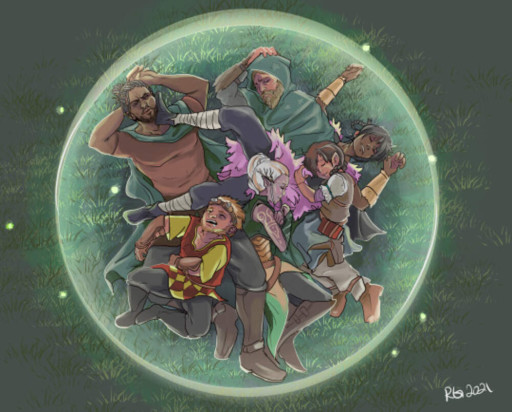
This level three evocation ritual is from the Player’s Handbook and has been a part of the DND lore since October 1979. Leomud’s Tiny Hut (also known as LTH and Tiny Hut due to copyright) allows the self to cast a 10-foot radius dome over the top of the self and eight additional creatures.
It has no door, and only creatures and objects within the dome when casting can enter or exit during the eight hours it is up. No magic can be cast through the dome itself, making it a great way to protect your party.
Why Leomud’s Tiny Hut is Great
LTH can help your party, whether their vision for the hut is for defense or potentially offensive. Here are some of the great perks of using it.
- Allows Plenty of Time and Safety for Resting: It’s no coincidence that LTH is the length of a long rest (with the caveat that the caster remains in the dome). LTH provides a safe, dry and comfortable atmosphere.
- A Prepared Fortress Before Battle: Your spellcaster could cast this before the battle, depending on how much prep you have before your encounter starts. That would give your party a safe space to recuperate and even take a short rest safely.
- A Stronghold For More Spelling: If your party’s spell caster is level 5, they can use Teleportation Circle. While it may take minutes to cast it, your magic user can do so uninterrupted. And more importantly, it gets your party members out of harm’s way!
Leomud’s Tiny Hut full details: D&D 5th Edition Wiki
2. Spiritual Weapon (Cleric)
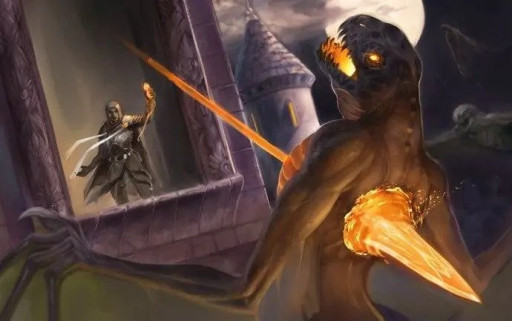
This level two evocation is a favorite of most clerics from the Player’s Handbook. You or your cleric can summon a spirit weapon that lasts for a minute as a bonus action. This spectral weapon has a range of 60 feet from you but can make melee attacks against a creature within 5 feet of it. Contrary to popular belief, Spiritual Weapons do not get opportunity attacks.
Successful hits yield force damage of 1d8+ spellcasting mod. Casting and recasting it again can cost just one bonus action and repeat the process. Spiritual weapons like Thor’s hammer and St. Cuthbert’s mace are popular Spiritual Weapon shapes.
Why Spiritual Weapon is Great
Spiritual Weapon is a great choice in the arsenal of your favorite god-fearing (or perhaps god-murdering?) cleric. Here’s why it’s an awesome choice for your party:
- Some Clerics are Preppers: If your cleric took up the Life or War Domains when it was time to pick a subclass, they won’t have to prepare this spell manually. This one will always be prepared and doesn’t count against a prepared spell limit.
- Clerics Shouldn’t Have All the Fun: While we’ve talked about clerics a lot, additional subclasses can pick this up too. College of Lore Bards, Divine Soul Sorcerers, and Oath of Conquest Paladins can all take
- No Concentration Required: A Cleric (or other subclasses that can access it) can have their Spiritual Weapon out for 1 minute, approximately 10 combat turns. Being able to swing it around as a bonus action with no concentration requirement is unfortunate for those receiving a god’s wrath.
Spiritual Weapon full details: D&D 5th Edition Wiki
1. Arcane Eye (Artificer, Wizard)
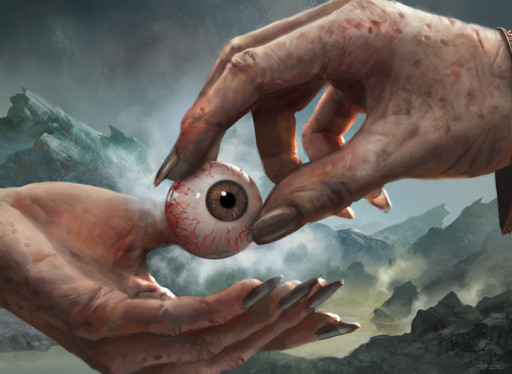
Last but not least (or is it first?) is Arcane Eye – one of the best utility spells in Dungeons and Dragons. This level four divination spell hails from the Player’s Handbook. This spell allows certain classes to conjure a magical, invisible eye within 30 feet of the caster. You can send this eye 30 feet in any direction to scout on your behalf, as it has standard sight and darkvision.
While this spell requires concentration to keep it active, you can keep it up for up to one hour. The eye can also move into spaces as small as 1 inch. And no, just because you have Arcane Eye active does not mean having a “line of sight” for spells.
A great perk of Arcane Eye is that you do not lose your normal senses to utilize it, unlike Find Familiar.
Why Arcane Eye is Great
Are you the nosy type? Like reading other people’s diaries? Here’s why Arcane Eye might be the best spell for your party.
- Everyone is Now 007: It's easy to perform reconnaissance whenever you have a small floating eyeball that is invisible and only detectable by Detect Magic. Some DMs have ruled that Arcane Eye is practically unobservable outside specific checks that would look for something of this nature.
- Keeping the Squishy Party Members Alive: As your wizards and artificers will cast Arcane Eye, keeping them out of harm's way is a plus (duh) as they're usually the squishiest members of your party. Arcane Eye allows them to be involved, but not on the frontlines of combat or potential trap encounters.
- Make a Map in Real Time: As your caster can regain and control their physical senses, you can allow them to draw a map while mentally seeing what the eye is up to. The more information, the better.
Arcane Eye full details: D&D 5th Edition Wiki

